Nissan Rogue Select 2015 Owner's Manual

→
2015 ROG U E SE LECT
OWNER’S MANUAL
For your safety, read carefully and keep in this vehicle.
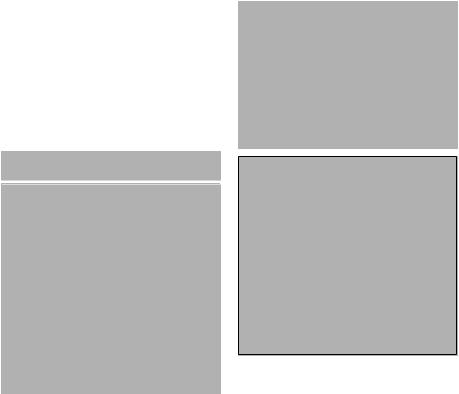
Foreword
Welcome to the growing family of new NISSAN owners. This vehicle is delivered to you with confidence. It was produced using the latest techniques and strict quality control.
This manual was prepared to help you understand the operation and maintenance of your vehicle so that you may enjoy many miles of driving pleasure. Please read through this manual before operating your vehicle.
A separate Warranty Information Booklet explains details about the warranties covering your vehicle. The NISSAN Service and Maintenance Guide explains details about maintaining and servicing your vehicle. Additionally, a separate Customer Care/Lemon Law Booklet will explain how to resolve any concerns you may have with your vehicle, as well as clarify your rights under your state’s lemon law.
In addition to factory installed options, your vehicle may also be equipped with additional accessories installed by NISSAN or by your NISSAN dealer prior to delivery. It is important that you familiarize yourself with all disclosures, warnings, cautions and instructions concerning proper use of such accessories prior to operating the vehicle and/or accessory. See a NISSAN dealer for details concerning the particular accessories with which your vehicle is
equipped.
Your NISSAN dealer knows your vehicle best. When you require any service or have any questions, we will be glad to assist you with the extensive resources available to us.
READ FIRST — THEN DRIVE SAFELY
Before driving your vehicle, read your Owner’s Manual carefully. This will ensure familiarity with controls and maintenance requirements, assisting you in the safe operation of your vehicle.
 WARNING
WARNING
IMPORTANT SAFETY INFORMATION REMINDERS FOR SAFETY!
Follow these important driving rules to help ensure a safe and comfortable trip for you and your passengers!
.NEVER drive under the influence of alcohol or drugs.
.ALWAYS observe posted speed limits and never drive too fast for conditions.
.ALWAYS give your full attention to driving and avoid using vehicle features or taking other actions that could distract you.
.ALWAYS use your seat belts and appropriate child restraint systems. Pre-teen children should be seated in the rear seat.
.ALWAYS provide information about the proper use of vehicle safety features to all occupants of the vehicle.
.ALWAYS review this Owner’s Manual for important safety information.
ON-PAVEMENT AND OFF-ROAD DRIVING
This vehicle will handle and maneuver differently from an ordinary passenger car because it has a higher center of gravity. As with other vehicles with features of this type, failure to operate this vehicle correctly may result in loss of control or an accident. Be sure to read “On-pavement and off-road driving precautions”, “Avoiding collision and rollover” and “Driving safety precautions” in the “5. Starting and driving” section of this manual.
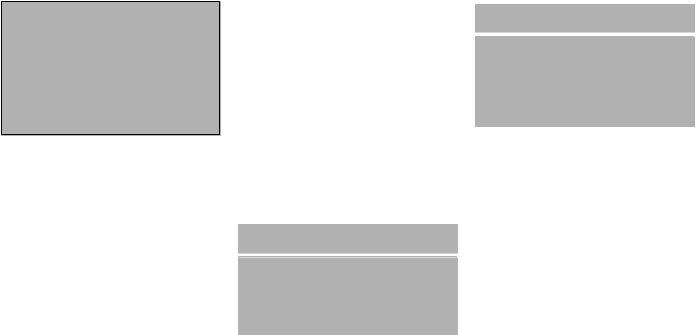
MODIFICATION OF YOUR VEHICLE
This vehicle should not be modified. Modification could affect its performance, safety or durability, and may even violate governmental regulations. In addition, damage or performance problems resulting from modification may not be covered under NISSAN warranties.
WHEN READING THE MANUAL
This manual includes information for all features and equipment available on this model. Features and equipment in your vehicle may vary depending on model, trim level, options selected, order, date of production, region or availability. Therefore, you may find information about features or equipment that are not included or installed on your vehicle.
All information, specifications and illustrations in this manual are those in effect at the time of printing. NISSAN reserves the right to change specifications, performance, design or component suppliers without notice and without obligation. From time to time, NISSAN may update or revise this manual to provide owners with the most accurate information currently available. Please carefully read and retain with
this manual all revision updates sent to you by NISSAN to ensure you have access to accurate and up-to-date information regarding your vehicle. Current versions of vehicle Owner’s Manuals and any updates can also be found in the Owner section of the NISSAN website at https://owners.nissanusa.com/nowners/navigation/manualsGuide. If you have questions concerning any information in your Owner’s Manual, contact NISSAN Consumer Affairs. See the NISSAN CUSTOMER CARE PROGRAM page in this Owner’s Manual for contact information.
IMPORTANT INFORMATION ABOUT THIS MANUAL
You will see various symbols in this manual. They are used in the following ways:
 WARNING
WARNING
This is used to indicate the presence of a hazard that could cause death or serious personal injury. To avoid or reduce the risk, the procedures must be followed precisely.
 CAUTION
CAUTION
This is used to indicate the presence of a hazard that could cause minor or moderate personal injury or damage to your vehicle. To avoid or reduce the risk, the procedures must be followed carefully.
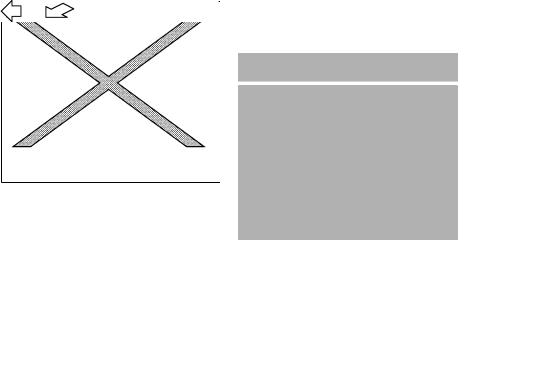
SIC0697 
If you see the symbol above, it means “Do not do this” or “Do not let this happen”.
If you see a symbol similar to those above in an illustration, it means the arrow points to the front of the vehicle.
Arrows in an illustration that are similar to those above indicate movement or action.
Arrows in an illustration that are similar to those
above call attention to an item in the illustration.
CALIFORNIA PROPOSITION 65 WARNING
 WARNING
WARNING
Engine exhaust, some of its constituents, and certain vehicle components contain or emit chemicals known to the State of California to cause cancer and birth defects or other reproductive harm. In addition, certain fluids contained in vehicles and certain products of component wear contain or emit chemicals known to the State of California to cause cancer and birth defects or other reproductive harm.
CALIFORNIA PERCHLORATE ADVISORY
Some vehicle parts, such as lithium batteries, may contain perchlorate material. The following advisory is provided: “Perchlorate Material - special handling may apply, See www.dtsc.ca.gov/
hazardouswaste/perchlorate.”
Bluetooth is a trademark owned by Bluetooth SIG, Inc., and licensed to Visteon Corporation.
SiriusXM Satellite Radio requires subscription, sold separately. Not available in Alaska, Hawaii or Guam. For more information, visit www.siriusxm.com.
*C 2014 NISSAN MOTOR CO., LTD.
All rights reserved. No part of this Owner’s Manual may be reproduced or stored in a retrieval system, or transmitted in any form, or by any means, electronic, mechanical, photocopying, recording or otherwise, without the prior written permission of Nissan Motor Co., Ltd.
NISSAN CUSTOMER CARE
PROGRAM
NISSAN CARES ...
Both NISSAN and your NISSAN dealer are dedicated to serving all your automotive needs. Your satisfaction with your vehicle and your NISSAN dealer are our primary concerns. Your NISSAN dealer is always available to assist you with all your automobile sales and service needs.
However, if there is something that your NISSAN dealer cannot assist you with or you would like to provide NISSAN directly with comments or questions, please contact the NISSAN Consumer Affairs Department using our toll-free number:
1-800-NISSAN-1 (1-800-647-7261)
The Consumer Affairs Department will ask for the following information:
. Your name, address, and telephone number
.Vehicle identification number (attached to the top of the instrument panel on the driver’s side)
.Date of purchase
.Current odometer reading
. Your NISSAN dealer’s name
. Your comments or questions OR
You can write to NISSAN with the information at:
Nissan North America, Inc. Consumer Affairs Department P.O. Box 685003
Franklin, TN 37068-5003 or via e-mail at:
nnaconsumeraffairs@nissan-usa.com
If you prefer, visit us at:
www.nissanusa.com
We appreciate your interest in NISSAN and thank you for buying a quality NISSAN vehicle.
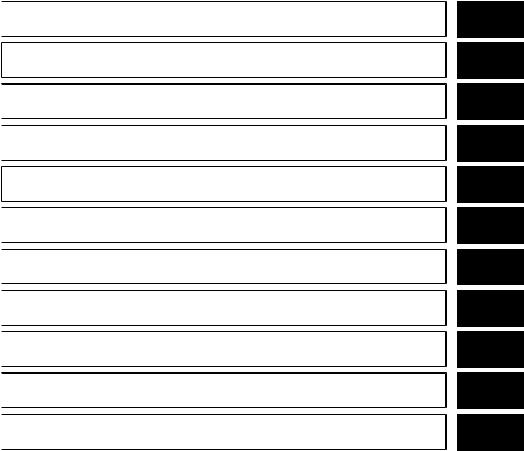
Table of
Contents
 Illustrated table of contents
Illustrated table of contents
Safety — Seats, seat belts and supplemental restraint system
 Instruments and controls
Instruments and controls
 Pre-driving checks and adjustments
Pre-driving checks and adjustments
Heater, air conditioner, audio, phone and voice recognition systems
 Starting and driving
Starting and driving
 In case of emergency
In case of emergency
 Appearance and care
Appearance and care
 Maintenance and do-it-yourself
Maintenance and do-it-yourself
 Technical and consumer information
Technical and consumer information  Index
Index
0
1
2
3
4
5
6
7
8
9
10

0 Illustrated table of contents
Seats, seat belts and Supplemental Restraint |
|
System (SRS) ............................................................................ |
0-2 |
Exterior front ............................................................................... |
0-3 |
Exterior rear ................................................................................ |
0-4 |
Passenger compartment ......................................................... |
0-5 |
Instrument panel ....................................................................... |
0-6 |
Meters and gauges .................................................................. |
0-7 |
Engine compartment ............................................................... |
0-8 |
QR25DE engine ................................................................ |
0-8 |
Warning and indicator lights ................................................. |
0-9 |

SEATS, SEAT BELTS AND
SUPPLEMENTAL RESTRAINT
SYSTEM (SRS)
10. Rear seats (P.1-4)
— Child restraints (P.1-21)
11. LATCH (Lower Anchors and Tethers for CHildren) System (P.1-23)
12. Child restraint anchor points (for top tether strap child restraint) (P.1-37)
1.Supplemental front-impact air bags (Page 1-41)
2.Front seat-mounted side-impact supplemental air bags (P.1-41)
3.Seat belts (P.1-9)
4.Head restraints (P.1-5)
— Front-seat Active Head Restraints (P.1-7)
0-2 Illustrated table of contents
SSI0348 
5.Roof-mounted curtain side-impact and rollover supplemental air bags (P.1-41)
6.Rear center seat belt (P.1-15)
7.Occupant classification sensor (pattern sensor)
— Advanced air bag system (P.1-47)
8.Front seats (P.1-3)
9.Seat belt pretensioner (P.1-52)

EXTERIOR FRONT
9. Tires
— Wheel and tires (P.8-29, P.9-7)
— Flat tire (P.6-2)
— Tire Pressure Monitoring System (TPMS) (P.2-12, P.5-3)
10. Doors
— Keys (P.3-2)
— Door locks (P.3-3)
— Remote keyless entry system (P.3-5)
— Security system (P.2-24)
11. Child safety rear door lock (P.3-5) *: if so equipped
JVC0751X 
1. |
Hood (P.3-9) |
|
— Window washer fluid (P.8-12) |
2. |
Headlight and turn signal lights |
4. |
Roof rack (rail)* (P.2-38) |
|
— Switch operation (P.2-29) |
5. |
Outside mirrors (P.3-14) |
|
— Bulb replacement (P.8-24) |
6. |
Power windows (P.2-39) |
3. |
Windshield wiper and washer |
7. |
Recovery hook (P.6-14) |
|
— Switch operation (P.2-27) |
8. |
License plate installation (P.9-11) |
|
— Blade replacement (P.8-17) |
|
|
Illustrated table of contents 0-3

EXTERIOR REAR
8. Rear combination light
— Bulb replacement (P.8-26) 9. Fuel-filler door
— Operation (P.3-11)
— Fuel information (P.9-3) *: if so equipped
JVC0576X 
1.Lift gate (P.3-10)
2.Rearview camera* (P.4-2)
3.Rear window wiper and washer
—Switch operation (P.2-28)
—Window washer fluid (P.8-12)
4.Rear window defroster (P.2-29)
5.High-mounted stop light
—Bulb replacement (P.8-26)
6.Antenna (P.4-38)
—Satellite radio antenna* (P.4-12)
7.Back-up light
—Bulb replacement (P.8-26)
0-4 Illustrated table of contents
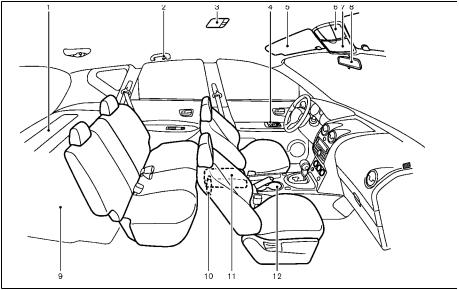
PASSENGER COMPARTMENT
— Spare tire (P.6-4)
10. Rear cup holders (P.2-32)
11. Console box (P.2-35)
— Power outlet (P.2-31)
— iPod or USB connection port* (P.4-26) 12. Front cup holders (P.2-32)
*: if so equipped
JVC0577X 
1. |
Cargo cover* (P.2-36) |
6. |
Front map lights (P.2-42) |
2. |
Coat hooks (P.2-38) |
7. |
Sunglasses holder (P.2-33) |
3. |
Ceiling light (P.2-43) |
8. |
Inside mirror (P.3-14) |
4. |
Door armrest |
9. |
Cargo area |
|
— Power window switch (P.2-39) |
|
— Storages (P.2-35) |
|
— Power door lock switch (P.3-4) |
|
— Luggage hooks (P.2-37) |
5. |
Sun visors (P.3-13) |
|
— Cargo light (P.2-44) |
Illustrated table of contents 0-5

INSTRUMENT PANEL
|
|
|
JVC0578X |
1. |
Side ventilator (P.4-7) |
4. |
Steering wheel |
2. |
Headlight and turn signal switch |
|
— Horn (P.2-31) |
|
(P.2-29) |
|
— Driver supplemental air bag (P.1-41) |
3. |
Steering-wheel-mounted controls (left side)* |
|
— Electric power steering system (P.5-24) |
|
— Audio control* (P.4-37) |
5. |
Meters and gauges (P.2-4) |
|
— Bluetooth Hands-Free Phone System con- |
6. |
Steering-wheel-mounted controls (right side) |
|
trol* (P.4-40) |
|
— Cruise control switches* (P.5-17) |
0-6 Illustrated table of contents
7.Wiper and washer switch (P.2-27)
8.Center ventilator (P.4-7)
9.Hazard warning flasher switch (P.6-2)
10.Audio system (P.4-12)
—Clock (P.4-22, P.4-30)
—RearView Monitor* (P.4-2)
11.Front passenger supplemental air bag (P.1-41)
12.Outside remote mirror control switch (P.3-14)
13.All-Wheel Drive (AWD) LOCK switch* (P.5-20)
14.Fuse box cover (P.8-20)
15.Vehicle Dynamic Control (VDC) OFF switch (P.2-31, P.5-27)
16.Hood release handle (P.3-9)
17.Tilting steering wheel lever (P.3-13)
18.Parking brake (P.5-16)
19.Ignition switch (P.5-9)
20.Sport mode switch (P.5-14)
21.Power outlet (P.2-31)
22.Heater/air conditioner control (P.4-8)
23 Shift lever (P.5-12)
24.Front passenger air bag status light (P.1-48)
25.Rear window defroster switch (P.2-29)
26.Glove box (P.2-34)
*: if so equipped

METERS AND GAUGES
1.Tachometer (P.2-6)
2.Warning/indicator lights (P.2-9)
3.Vehicle information display (P.2-17)
4.Speedometer (P.2-5)
5.Engine coolant temperature gauge (P.2-6)
6. switch (twin trip odometer control and brightness control) (P.2-5, P.2-8)
switch (twin trip odometer control and brightness control) (P.2-5, P.2-8)
JVC0301X 
7. switch (settings control and trip computer control) (P.2-17)
switch (settings control and trip computer control) (P.2-17)
8.Fuel gauge (P.2-7)
Illustrated table of contents 0-7
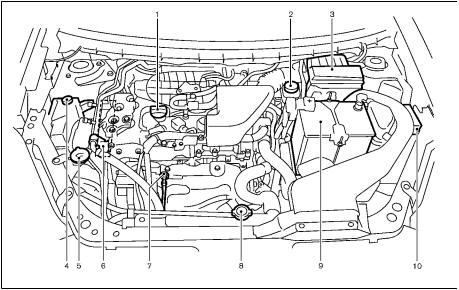
ENGINE COMPARTMENT
QR25DE ENGINE
1.Engine oil filler cap (P.8-9)
2.Brake fluid reservoir (P.8-11)
3.Air cleaner (P.8-16)
4.Engine coolant reservoir (P.8-8)
5.Window washer fluid reservoir (P.8-12)
6.Engine drive belt location (P.8-14)
0-8 Illustrated table of contents
SDI2127 
7.Engine oil dipstick (P.8-9)
8.Radiator filler cap (P.8-7)
—Vehicle overheat (P.6-11)
9.Battery (P.8-13)
—Jump starting (P.6-9)
10.Fuse/fusible link holder (P.8-19)
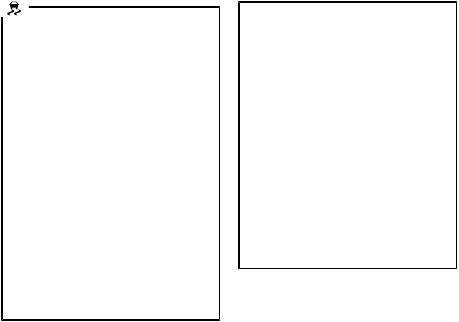
WARNING AND INDICATOR LIGHTS
Warning |
Name |
Page |
||
|
light |
|||
|
|
|
||
|
|
|
All-Wheel Drive (AWD) warning |
2-10 |
|
|
|
||
|
|
|
light (AWD models) (if so |
|
|
|
|
equipped) |
|
|
|
|
|
|
|
|
|
Anti-lock Braking System (ABS) |
2-10 |
|
|
|
||
|
|
|
warning light |
|
|
|
|
|
|
|
|
|
|
|
|
|
|
Brake warning light |
2-11 |
|
|
|
||
|
|
|
|
|
|
|
|
Charge warning light |
2-11 |
|
|
|
||
|
|
|
|
|
|
|
|
|
|
|
|
|
Electric power steering warning |
2-11 |
|
|
|
||
|
|
|
light |
|
|
|
|
|
|
|
|
|
|
|
|
|
|
Engine oil pressure warning |
2-12 |
|
|
|
||
|
|
|
light |
|
|
|
|
|
|
|
|
|
|
|
|
|
|
Low fuel warning light |
2-12 |
|
|
|
||
|
|
|
|
|
|
|
|
|
|
|
|
|
Low tire pressure warning light |
2-12 |
|
|
|
||
|
|
|
|
|
|
|
|
Master warning light |
2-13 |
|
|
|
||
|
|
|
|
|
|
|
|
|
|
|
|
|
Seat belt warning light |
2-13 |
|
|
|
||
|
|
|
|
|
|
|
|
|
|
|
|
|
Supplemental air bag warning |
2-14 |
|
|
|
||
|
|
|
light |
|
|
|
|
|
|
|
|
|
|
|
|
|
|
Vehicle Dynamic Control (VDC) |
2-14 |
|
|
|
||
|
|
|
warning light |
|
|
|
|
|
|
|
|
|
|
|
|
|
|
|
|
Indicator |
Name |
Page |
||
|
light |
|||
|
|
|
||
|
|
|
All-Wheel Drive (AWD) LOCK |
2-14 |
|
|
|
||
|
|
|
indicator light (AWD models) (if |
|
|
|
|
so equipped) |
|
|
|
|
Exterior light indicator |
2-14 |
|
|
|
||
|
|
|
|
|
|
|
|
|
|
|
|
|
Front passenger air bag status |
2-15 |
|
|
|
||
|
|
|
light |
|
|
|
|
|
|
|
|
|
|
|
|
|
|
High beam indicator light |
2-15 |
|
|
|
||
|
|
|
|
|
|
|
|
|
|
|
|
|
Malfunction Indicator Light |
2-15 |
|
|
|
||
|
|
|
(MIL) |
|
|
|
|
|
|
|
|
|
|
|
|
|
|
Overdrive off indicator light |
2-16 |
|
|
|
||
|
|
|
|
|
|
|
|
|
|
|
|
|
Security indicator light |
2-16 |
|
|
|
||
|
|
|
|
|
|
|
|
SPORT mode indicator light |
2-16 |
|
|
|
||
|
|
|
|
|
|
|
|
|
|
|
|
|
Turn signal/hazard indicator |
2-16 |
|
|
|
||
|
|
|
lights |
|
|
|
|
|
|
|
|
|
|
|
|
|
|
Vehicle Dynamic Control (VDC) |
2-16 |
|
|
|
||
|
|
|
off indicator light |
|
|
|
|
|
|
|
|
|
|
|
|
|
|
|
|
Illustrated table of contents 0-9
MEMO
0-10 Illustrated table of contents
1 Safety — Seats, seat belts and supplemental restraint system 
Seats ............................................................................................ |
1-2 |
Front seats ............................................................................ |
1-3 |
Rear seats ............................................................................. |
1-4 |
Head restraints/Headrests ...................................................... |
1-5 |
Adjustable head restraint/headrest components ........ |
1-6 |
Non-adjustable head |
|
restraint/headrest components ........................................ |
1-6 |
Remove .................................................................................. |
1-6 |
Install ...................................................................................... |
1-7 |
Adjust ..................................................................................... |
1-7 |
Seat belts .................................................................................... |
1-9 |
Precautions on seat belt usage ....................................... |
1-9 |
Pregnant women .............................................................. |
1-11 |
Injured persons ................................................................. |
1-11 |
Three-point type seat belt .............................................. |
1-11 |
Seat belt extenders .......................................................... |
1-18 |
Seat belt maintenance .................................................... |
1-18 |
Child safety .............................................................................. |
1-19 |
Infants .................................................................................. |
1-20 |
Small children .................................................................... |
1-20 |
Larger children .................................................................. |
1-20 |
Child restraints ....................................................................... |
1-21 |
Precautions on child restraints ................................... |
1-21 |
Lower Anchors and Tethers for CHildren |
|
System (LATCH) ............................................................ |
1-23 |
Rear-facing child restraint installation |
|
using LATCH ................................................................... |
1-25 |
Rear-facing child restraint installation using the |
|
seat belts .......................................................................... |
1-28 |
Forward-facing child restraint installation |
|
using LATCH ................................................................... |
1-31 |
Forward-facing child restraint installation using the |
|
seat belts .......................................................................... |
1-33 |
Booster seats .................................................................. |
1-37 |
Supplemental Restraint System ........................................ |
1-41 |
Precautions on Supplemental Restraint System ..... |
1-41 |
NISSAN Advanced Air Bag System |
|
(front seats) ..................................................................... |
1-47 |
Front seat-mounted side-impact supplemental |
|
air bag and roof-mounted curtain side-impact and |
|
rollover supplemental air bag systems ..................... |
1-51 |
Seat belts with pretensioners (front seats) ............. |
1-52 |
Supplemental air bag warning labels ....................... |
1-54 |
Supplemental air bag warning light .......................... |
1-54 |
Repair and replacement procedure .......................... |
1-54 |
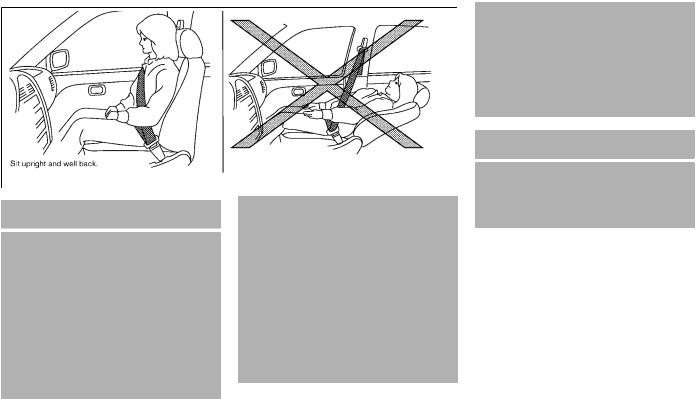
SEATS
SSS0133 
 WARNING
WARNING
.Do not ride in a moving vehicle when the seatback is reclined. This can be dangerous. The shoulder belt will not be against your body. In an accident, you could be thrown into it and receive neck or other serious injuries. You could also slide under the lap belt and receive serious internal injuries.
.For the most effective protection when the vehicle is in motion, the seat should be upright. Always sit
well back in the seat with both feet on the floor and adjust the seat properly. See “Precautions on seat belt usage” (P.1-9).
.After adjustment, gently rock in the seat to make sure it is securely locked.
.Do not leave children unattended inside the vehicle. They could unknowingly activate switches or controls. Unattended children could become involved in serious accidents.
1-2 Safety — Seats, seat belts and supplemental restraint system
.The seatback should not be reclined any more than needed for comfort. Seat belts are most effective when the passenger sits well back and straight up in the seat. If the seatback is reclined, the risk of sliding under the lap belt and being injured is increased.
 CAUTION
CAUTION
When adjusting the seat positions, be sure not to contact any moving parts to avoid possible injuries and/or damages.

FRONT SEATS
Front manual seat adjustment
Forward and backward:
Pull the lever *1 up and hold it while you slide the seat forward or backward to the desired position. Release the lever to lock the seat in position.
Reclining:
To recline the seatback, pull the lever *2 up and lean back. To bring the seatback forward, pull the lever up and lean your body forward. Release the lever to lock the seatback in position.
The reclining feature allows adjustment of the
SSS0792 
seatback for occupants of different sizes for added comfort and to help obtain proper seat belt fit. (See “Precautions on seat belt usage” (P.1-9).) Also, the seatback can be reclined to allow occupants to rest when the vehicle is stopped and the transmission in the P (Park) position with the parking brake fully applied.
SSS0793 
Seat lifter (if so equipped):
Pull up or push down the adjusting lever to adjust the seat height until the desired position is achieved.
Safety — Seats, seat belts and supplemental restraint system 1-3
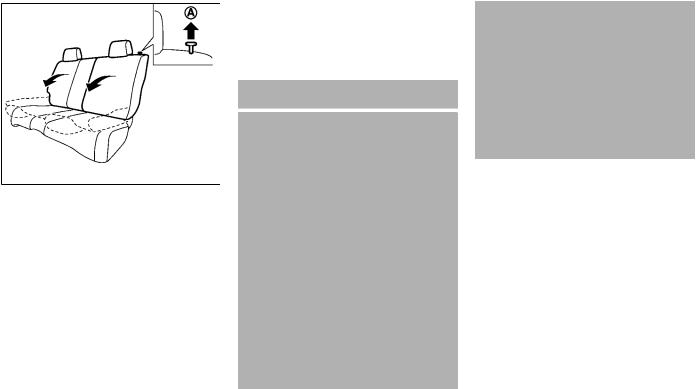
SSS0797 
REAR SEATS
Folding
Before folding the rear seats:
.Secure the seat belts on the seat belt hooks on the side wall. (See “Seat belt hooks” (P.1-15).)
.Release the connector tongue of the rear center seat belt from the buckle, and store the connector and seat belt tongues into the retractor base on the ceiling. (See “Rear center seat belt” (P.1-15).)
.If necessary, move the front seats forward to provide enough clearance so that the rear seats can be folded down completely.
To fold down the seatback of each rear seat, pull the adjusting knob *A .
To return the seatback to the seating position, lift up each seatback and push it to the upright position until it is latched.
 WARNING
WARNING
.Do not use the rear seat belts when the buckles are stowed in the seat pockets. Failure to do so may reduce the effectiveness of the entire restraint system and increase the chance or severity of injury in an accident.
.Do not fold down the rear seats when occupants are in the rear seat area or any objects are on the rear seats.
.Never allow anyone to ride in the cargo area or on the rear seats when they are in the fold-down position. Use of these areas by passengers without proper restraints could result in serious injury in an accident or sudden stop.
.Properly secure all cargo with ropes or straps to help prevent it from
1-4 Safety — Seats, seat belts and supplemental restraint system
sliding or shifting. Do not place cargo higher than the seatbacks. In a sudden stop or collision, unsecured cargo could cause personal injury.
.When returning the seatbacks to the upright position, be certain they are completely secured in the latched position. If they are not completely secured, passengers may be injured in an accident or sudden stop.
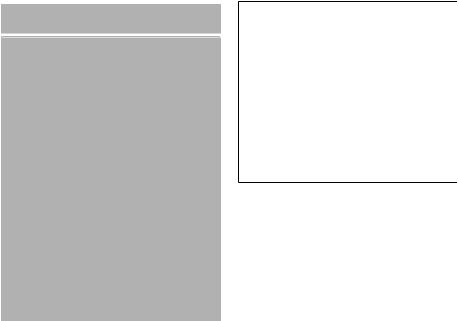
HEAD RESTRAINTS/HEADRESTS
 WARNING
WARNING
Head restraint/headrest supplement the other vehicle safety systems. They may provide additional protection against injury in certain rear end collisions. Adjustable head restraints/headrests must be adjusted properly, as specified in this section. Check the adjustment after someone else uses the seat. Do not attach anything to the head restraint/headrest stalks or remove the head restraint/headrest. Do not use the seat if the head restraint/ headrest has been removed. If the head restraint/headrest was removed, reinstall and properly adjust the head restraint/headrest before an occupant uses the seating position. Failure to follow these instructions can reduce the effectiveness of the head restraint/ headrest. This may increase the risk of serious injury or death in a collision.
JVR0051X 
The illustration shows the seating positions equipped with head restraint/headrest.
 Indicates the seating position is equipped with a head restraint.
Indicates the seating position is equipped with a head restraint.
 Indicates the seating position is equipped with a headrest.
Indicates the seating position is equipped with a headrest.
+ Indicates the seating position is not equipped with a head restraint or headrest.
.Your vehicle is equipped with a head restraint/headrest that may be integrated, adjustable or non-adjustable.
.Adjustable head restraints/headrests have multiple notches along the stalk to lock them in a desired adjustment position.
.The non-adjustable head restraints/headrests have a single locking notch to secure them to the seat frame.
.Proper Adjustment:
—For the adjustable type, align the head restraint/headrest so the center of your ear is approximately level with the center of the head restraint/headrest.
—If your ear position is still higher than the recommended alignment, place the head restraint/headrest at the highest position.
.If the head restraint/headrest has been removed, ensure that it is reinstalled and locked in place before riding in that designated seating position.
Safety — Seats, seat belts and supplemental restraint system 1-5

SSS0992 
 JVR0203X
JVR0203X 
ADJUSTABLE HEAD RESTRAINT/ |
NON-ADJUSTABLE HEAD RE- |
||
HEADREST COMPONENTS |
STRAINT/HEADREST COMPONENTS |
||
1. |
Removable head restraint/headrest |
1. |
Removable head restraint/headrest |
2. |
Multiple notches |
2. |
Single notch |
3. |
Lock knob |
3. |
Lock knob |
4. |
Stalks |
4. |
Stalks |
1-6 Safety — Seats, seat belts and supplemental restraint system
SSS1037 
REMOVE
Use the following procedure to remove the head restraint/headrest.
1.Pull the head restraint/headrest up to the highest position.
2.Push and hold the lock knob.
3.Remove the head restraint/headrest from the seat.
4.Store the head restraint/headrest properly in a secure place so it is not loose in the vehicle.
5.Reinstall and properly adjust the head restraint/headrest before an occupant uses the seating position.

SSS1038 
INSTALL
1.Align the head restraint/headrest stalks with the holes in the seat. Make sure that the head restraint/headrest is facing the correct
direction. The stalk with the adjustment
notch *1 must be installed in the hole with the lock knob *2 .
2.Push and hold the lock knob and push the head restraint/headrest down.
3.Properly adjust the head restraint/headrest before an occupant uses the seating position.
SSS0997 
ADJUST
For adjustable head restraint/headrest
Adjust the head restraint/headrest so the center is level with the center of your ears. If your ear position is still higher than the recommended alignment, place the head restraint/headrest at the highest position.
JVR0259X 
For non-adjustable head restraint/headrest
Make sure the head restraint/headrest is positioned so the lock knob is engaged in the notch before riding in that designated seating position.
Safety — Seats, seat belts and supplemental restraint system 1-7
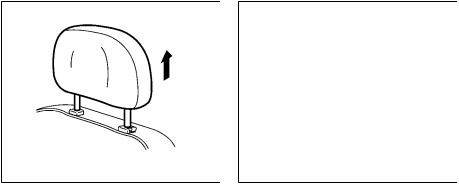
SSS1035 
Raise
To raise the head restraint/headrest, pull it up.
Make sure the head restraint/headrest is positioned so the lock knob is engaged in the notch before riding in that designated seating position.
SSS1036 
Lower
To lower, push and hold the lock knob and push the head restraint/headrest down.
Make sure the head restraint/headrest is positioned so the lock knob is engaged in the notch before riding in that designated seating position.
1-8 Safety — Seats, seat belts and supplemental restraint system

SEAT BELTS
PRECAUTIONS ON SEAT BELT
USAGE
If you are wearing your seat belt properly adjusted, and you are sitting upright and well back in your seat with both feet on the floor, your chances of being injured or killed in an accident and/or the severity of injury may be greatly reduced. NISSAN strongly encourages you and all of your passengers to buckle up every time you drive, even if your seating position includes a supplemental air bag.
Most U.S. states specify that seat belts be |
|
worn at all times when a vehicle is being |
SSS0136 |
driven. |
|
SSS0134 
Safety — Seats, seat belts and supplemental restraint system 1-9
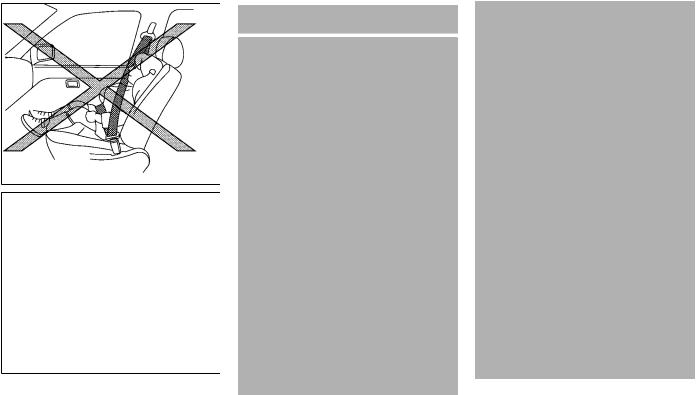
 WARNING
WARNING
. Every person who drives or rides in this vehicle should use a seat belt at all times. Children should be properly restrained in the rear seat and, if appropriate, in a child restraint.
. The seat belt should be properly adjusted to a snug fit. Failure to do so may reduce the effectiveness of the entire restraint system and increase the chance or severity of
SSS0016
injury in an accident. Serious injury or death can occur if the seat belt is not worn properly.
. Always route the shoulder belt over your shoulder and across your chest. Never put the belt behind your back, under your arm or across your neck. The belt should be away from your face and neck, but not falling off your shoulder.
. Position the lap belt as low and snug as possible AROUND THE HIPS, NOT THE WAIST. A lap belt
worn too high could increase the SSS0014 risk of internal injuries in an acci-
dent.
1-10 Safety — Seats, seat belts and supplemental restraint system
.Be sure the seat belt tongue is securely fastened to the proper buckle.
.Do not wear the seat belt inside out or twisted. Doing so may reduce its effectiveness.
.Do not allow more than one person to use the same seat belt.
.Never carry more people in the vehicle than there are seat belts.
.If the seat belt warning light glows continuously while the ignition is turned ON with all doors closed and all seat belts fastened, it may indicate a malfunction in the system. Have the system checked by a NISSAN dealer.
.No changes should be made to the seat belt system. For example, do not modify the seat belt, add material, or install devices that may change the seat belt routing or tension. Doing so may affect the operation of the seat belt system. Modifying or tampering with the seat belt system may result in serious personal injury.
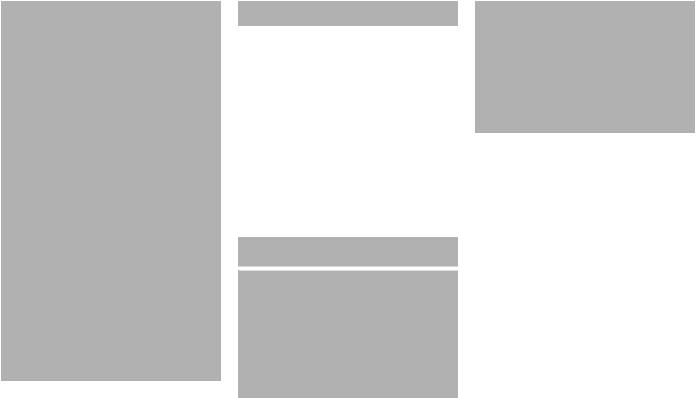
.Once a seat belt with pretensioner has activated, it cannot be reused and must be replaced together with the retractor. See a NISSAN dealer.
.Removal and installation of the pretensioner system components should be done by a NISSAN dealer.
.All seat belt assemblies, including retractors and attaching hardware, should be inspected after any collision by a NISSAN dealer. NISSAN recommends that all seat belt assemblies in use during a collision be replaced unless the collision was minor and the belts show no damage and continue to operate properly. Seat belt assemblies not in use during a collision should also be inspected and replaced if either damage or improper operation is noted.
.All child restraints and attaching hardware should be inspected after any collision. Always follow the restraint manufacturer’s inspection instructions and replacement recommendations. The child restraints should be replaced if they are
damaged.
PREGNANT WOMEN
NISSAN recommends that pregnant women use seat belts. The seat belt should be worn snug, and always position the lap belt as low as possible around the hips, not the waist. Place the shoulder belt over your shoulder and across your chest. Never put the lap/shoulder belt over your abdominal area. Contact your doctor for specific recommendations.
injuries. You could also slide under the lap belt and receive serious internal injuries.
.For the most effective protection when the vehicle is in motion, the seat should be upright. Always sit well back in the seat with both feet on the floor and adjust the seat belt properly.
INJURED PERSONS
NISSAN recommends that injured persons use seat belts, depending on the injury. Check with your doctor for specific recommendations.
THREE-POINT TYPE SEAT BELT
 WARNING
WARNING
.Every person who drives or rides in this vehicle should use a seat belt at all times.
.Do not ride in a moving vehicle when the seatback is reclined. This can be dangerous. The shoulder belt will not be against your body. In an accident, you could be thrown into it and receive neck or other serious
Safety — Seats, seat belts and supplemental restraint system 1-11
